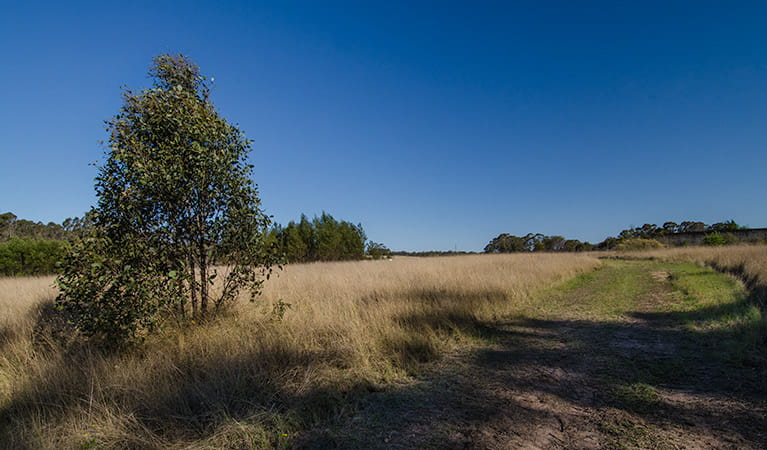Scheyville horse riding trails
Scheyville National Park
Overview
Bring your horse and enjoy 12km of riding trails in Scheyville National Park, located in north western Sydney. This bushland setting is suitable for horse riders of all ages and experience.
- Distance
- 12km of trails
- Time suggested
- 2hrs
- Grade
- Easy
- Opening times
- Monday to Friday, 8.30am to 4.30pm.
- Weekends: 8.30am to 4pm. Hours may vary.
- Equipment
provided - No. Bring your own horse to Scheyville. This is not a riding school where horses can be hired out.
- What to
bring - Drinking water, helmet, sunscreen, first aid kit, mobile phone, snacks, clothes for all weather conditions
- Please note
- Horse riding trails are located in the section of the park bounded by Scheyville Road, Old Pitt Town Road, Schofield Road, and Pitt Town Dural Road.
- Horse riding isn't permitted during or following wet weather due to trail damage.
- Let someone know where you are, in case you come off your horse and get injured.
- Please read the code of practice for horse riding in parks before you set out.
Saddle up your own horse and explore 12km of trail riding in Scheyville National Park; a picturesque and diverse woodland setting. Most riders find it easy to check out all of the trails here within a day, riding at a leisurely pace through forest and shrub, along open grasslands, and across creek crossings. Overall, the trails make for an easy, relaxed ride on reasonably flat terrain.
The trails are popular all year around as there’s plenty of shade for those hot summer days, and when the weather is cooler, you can make the most of the sunshine riding through grassland areas. In spring, the grounds are blanketed in beautiful native wildflowers. Keep your eyes open for eastern grey kangaroos and the occasional red-necked wallaby in the early morning or late afternoon.
Map
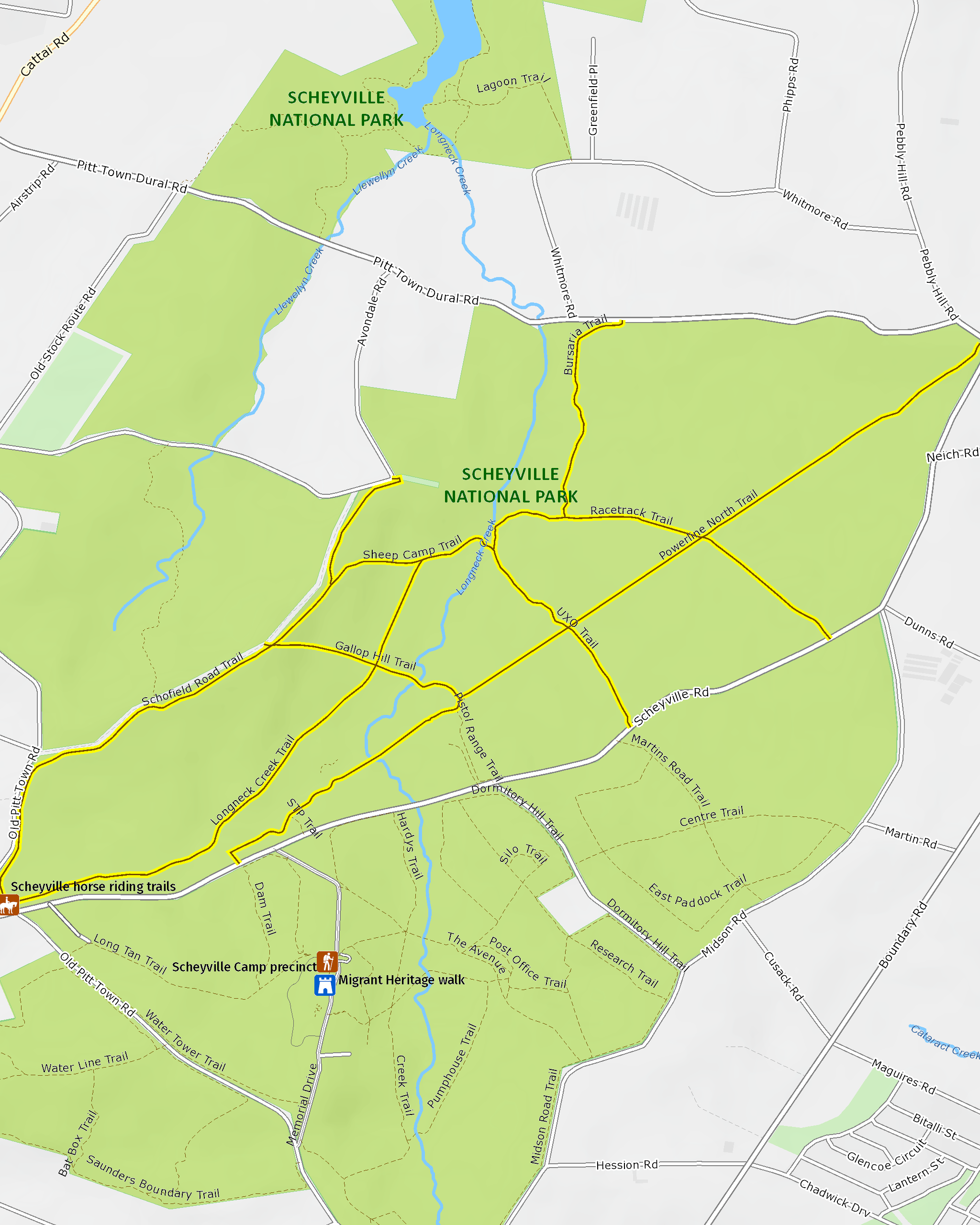
Map legend

Local alerts
For the latest updates on fires, closures and other alerts in this area, see https://www.nationalparks.nsw.gov.au/things-to-do/horse-riding-trails/scheyville-horse-riding-trails/local-alerts
Park info
- in Scheyville National Park in the Sydney and surrounds region
Scheyville National Park is open 8am to 6pm from May to August and 8am to 8pm from September to April. The park may have to close at times due to poor weather or fire danger.
Visitor info
All the practical information you need to know about Scheyville horse riding trails.
Getting there and parking
Get driving directions
Scheyville horse riding trails are in the central precinct of Scheyville National Park. To get there:
From Parramatta:
- Travel north-west on Windsor Road to Boundary Road, Vineyard (6km east of Windsor).
- Turn north onto Boundary Road, and then west on Old Pitt Town Road.
- Turn north-east on Scheyville Road
From Windsor:
- Take Windsor Road and turn east onto Pitt Town Road, then onto Saunders Road, then Scheyville Road.
Parking
Horse float parking is available at two locations:
- Inside the gate on Scheyville Road, just south of Midson Road.
- Outside the gate on the corner of Scheyville and Old Pitt Town Roads.
Best times to visit
There are lots of great things waiting for you in Scheyville National Park. Here are some of the highlights.
Autumn
Ride a horse around the central precinct of the park, where several trails thread over and around Longneck Creek.
Spring
Discover the area's fascinating heritage with a visit to the historical Scheyville Camp Precinct.
Summer
Take a morning stroll around Longneck Lagoon to observe the many bird species that call the wetland home, or drop in on their long migrations.
Weather, temperature and rainfall
Summer temperature
Average
11.2°C and 29.1°C
Highest recorded
42.5°C
Winter temperature
Average
4.1°C and 17.9°C
Lowest recorded
-7.2°C
Rainfall
Wettest month
January
Driest month
September
The area’s highest recorded rainfall in one day
309.4mm
Maps and downloads
Prohibited
Pets
Pets and domestic animals (other than certified assistance animals) are not permitted. Find out which regional parks allow dog walking and see the pets in parks policy for more information.
Smoking
NSW national parks are no smoking areas.
Learn more
Scheyville horse riding trails is in Scheyville National Park. Here are just some of the reasons why this park is special:
Feathered migrants
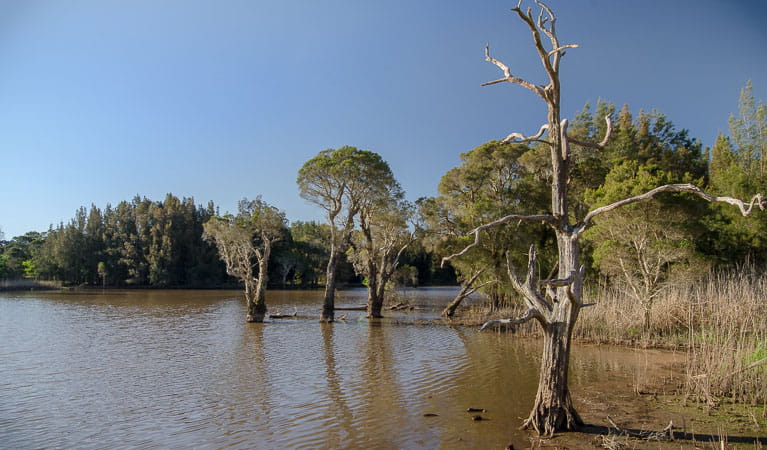
The park sustains an impressive population of permanent and migratory birds, including several precious species like the vulnerable swift parrot and turquoise parrot, and the endangered regent honeyeater. Bring some comfortable shoes and a pair of binoculars to get the most out of this quiet landscape, which changes throughout the year as different species come and go.
- Longneck Lagoon walking track A small freshwater wetland, Longneck Lagoon walking track allows visitors to see the startling array of birds that frequent the area. Perfect for walking with children.
Putting down roots
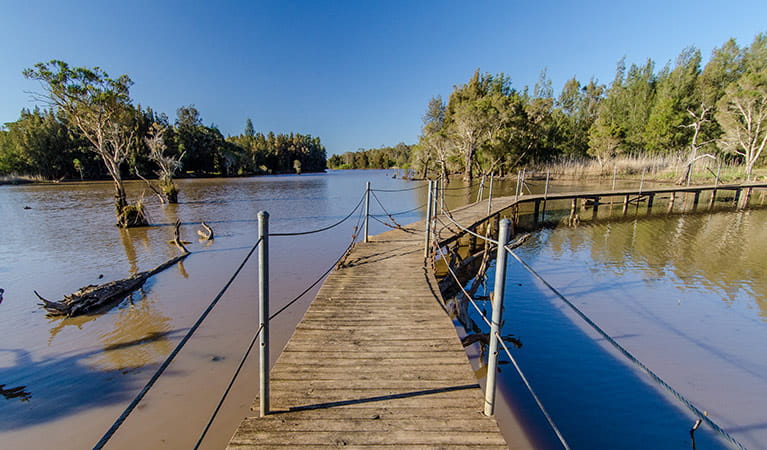
Scheyville National Park protects a large area of the Cumberland Plain Woodland, an endangered ecological community. There’s also a small area of Casltlereagh scribbly gum woodland and shale transition forest. Strolling through Scheyville has much to interest naturalists – and animal enthusiasts, for that matter. The native thorn bush is an important understory habitat for birds. There are over 140 types of waterbirds, offering superb birdwatching opportunities. There are horse riding tracks and places for cycling. There is even an education centre focusing on plants and animals.
- Longneck Lagoon walking track A small freshwater wetland, Longneck Lagoon walking track allows visitors to see the startling array of birds that frequent the area. Perfect for walking with children.
The Australian story
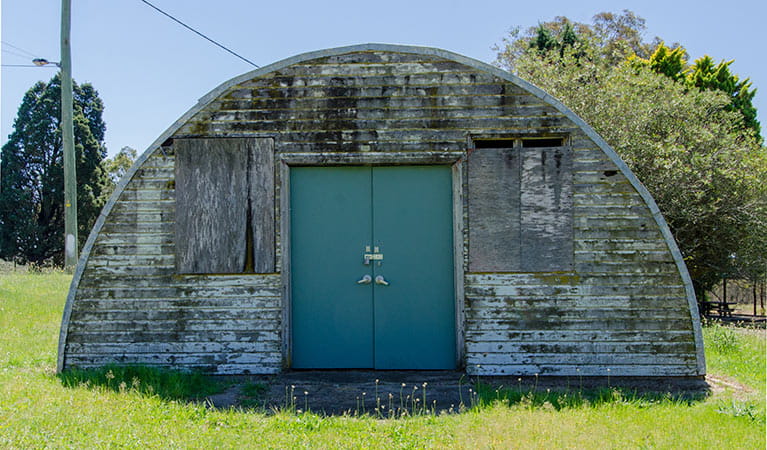
Scheyville has a rich heritage that gives us a great insight into the past 175 years of Australian history. It has played host to a government cooperative farm and an agricultural training facility. In World War I, it was an internment camp, in World War II, a training base for the First Australian Parachute Battalion. It’s also been a migrant camp for new Australians and an officer’s training unit in the Vietnam War. Scheyville has seen it all. And its remarkable life continues too: around a quarter of a million Australians are linked to the Scheyville site through their ancestors. Because of this, Scheyville is recognised by the NSW State Heritage Register.
- Migrant Heritage walk Migrant Heritage walk offers an easy stroll around original structures from the post-WWII migrant camp of Scheyville, with interpretive panels detailing the site’s heritage.
- Scheyville Camp precinct Take an easy walk around Scheyville Camp precinct in Scheyville National Park and explore the area's fascinating heritage. See restored buildings, remnants of structures long fallen, and uncover their unique history through interpretive signs.
Plants and animals protected in this park
Animals
-
Cumberland Plain land snail (Meridolum corneovirens)
The endangered Cumberland Plain land snail is only found on the Cumberland Plain, west of Sydney. During drought it digs deep into the soil to escape harsh conditions. Its brown shell is thin and fragile.

